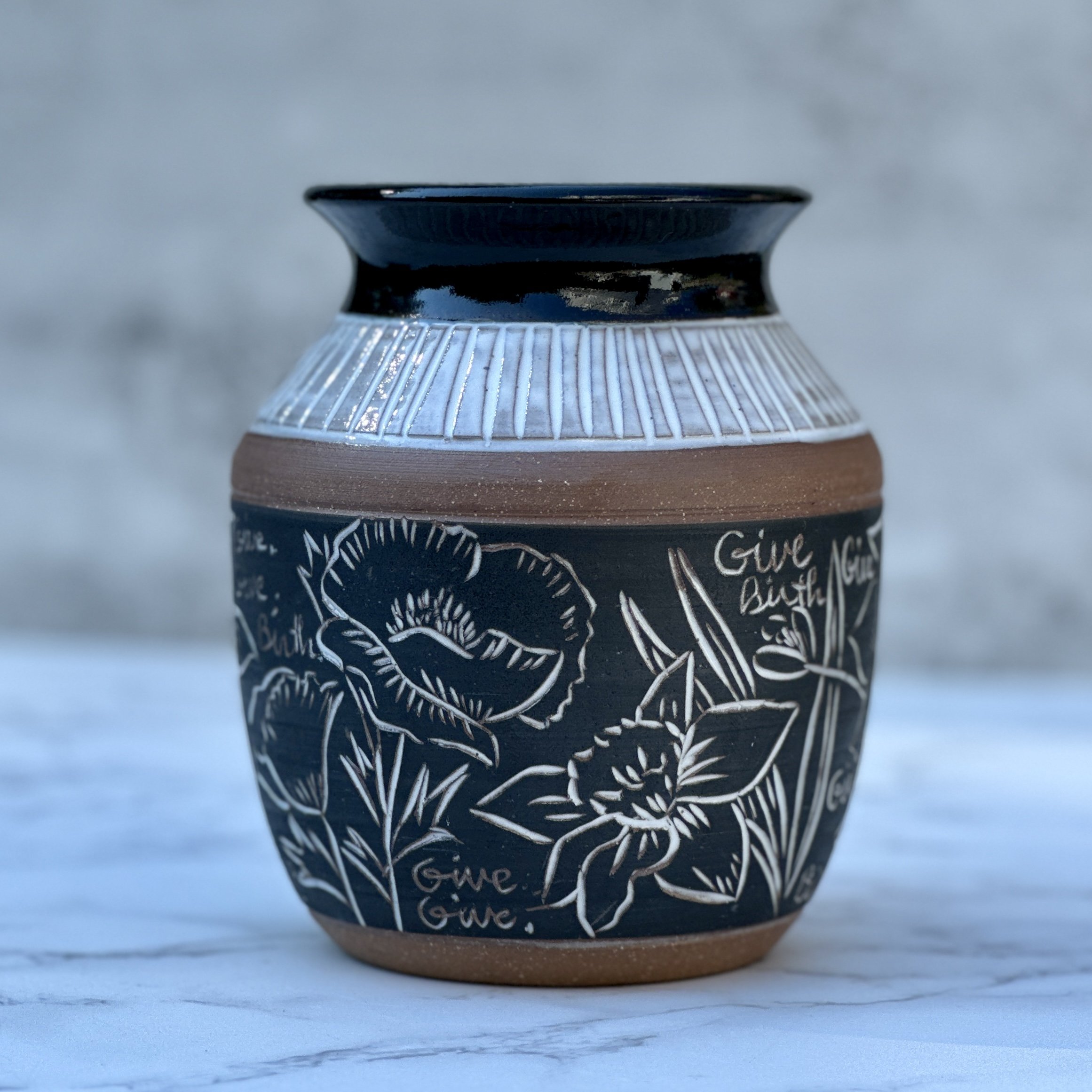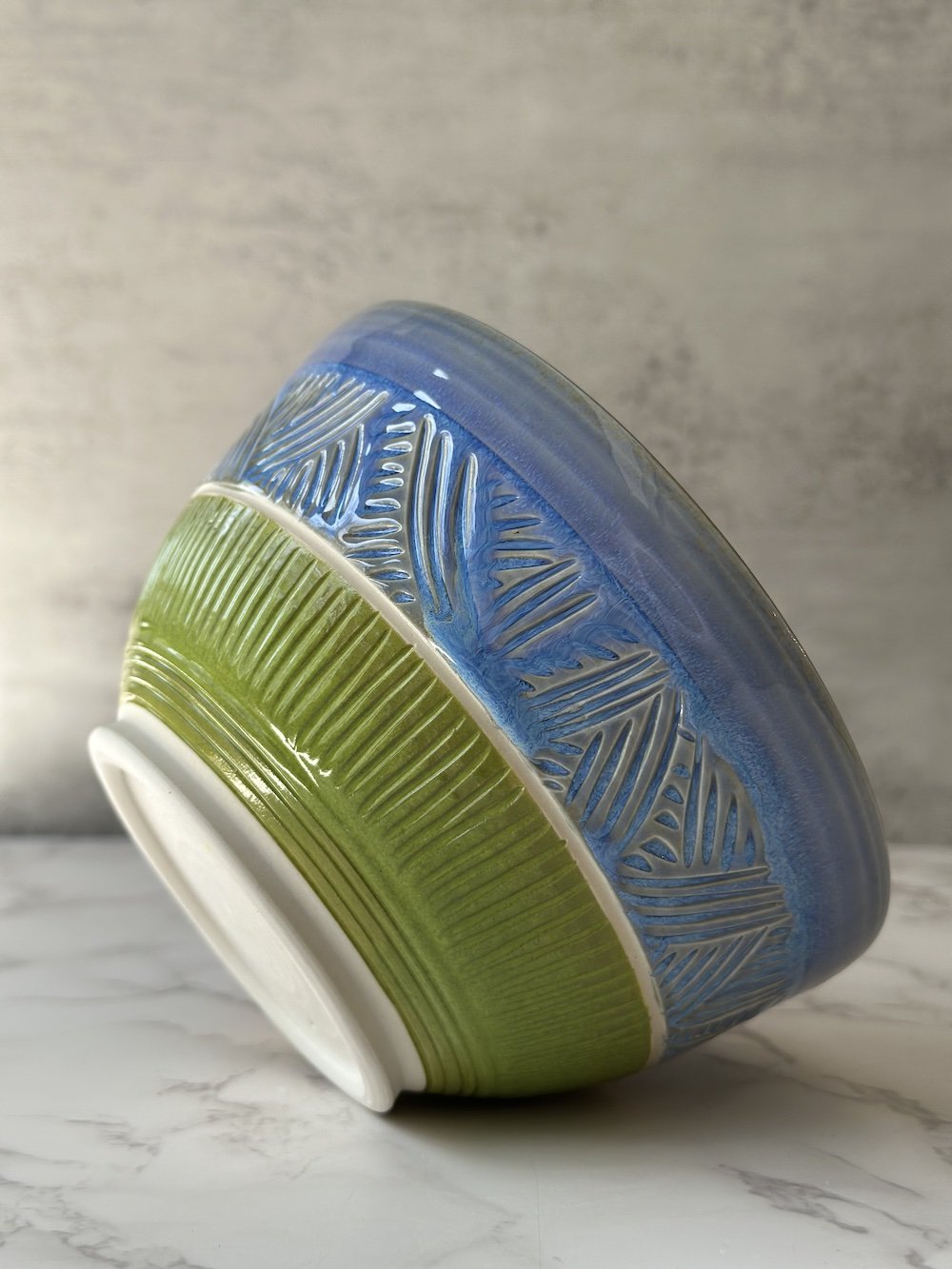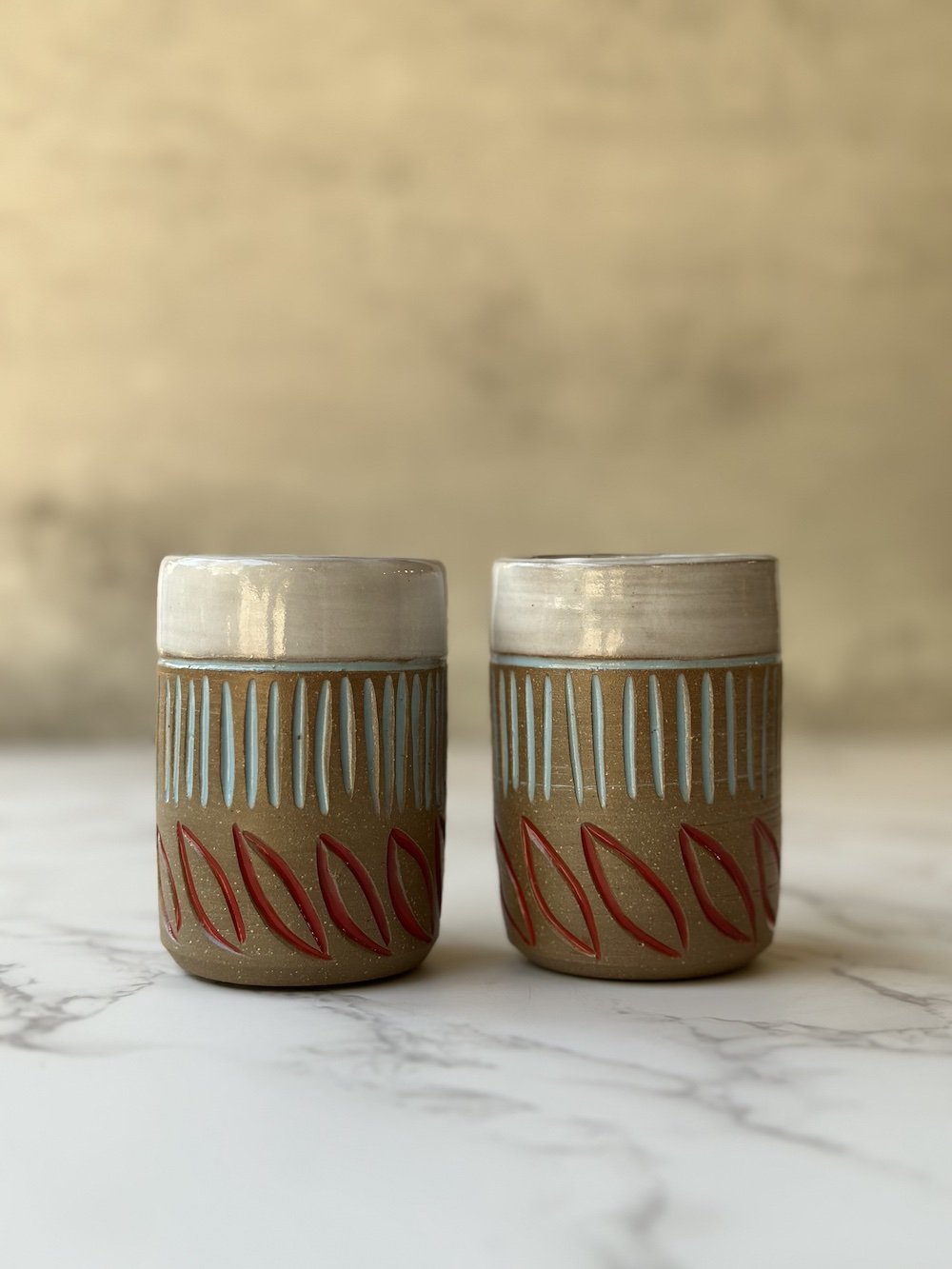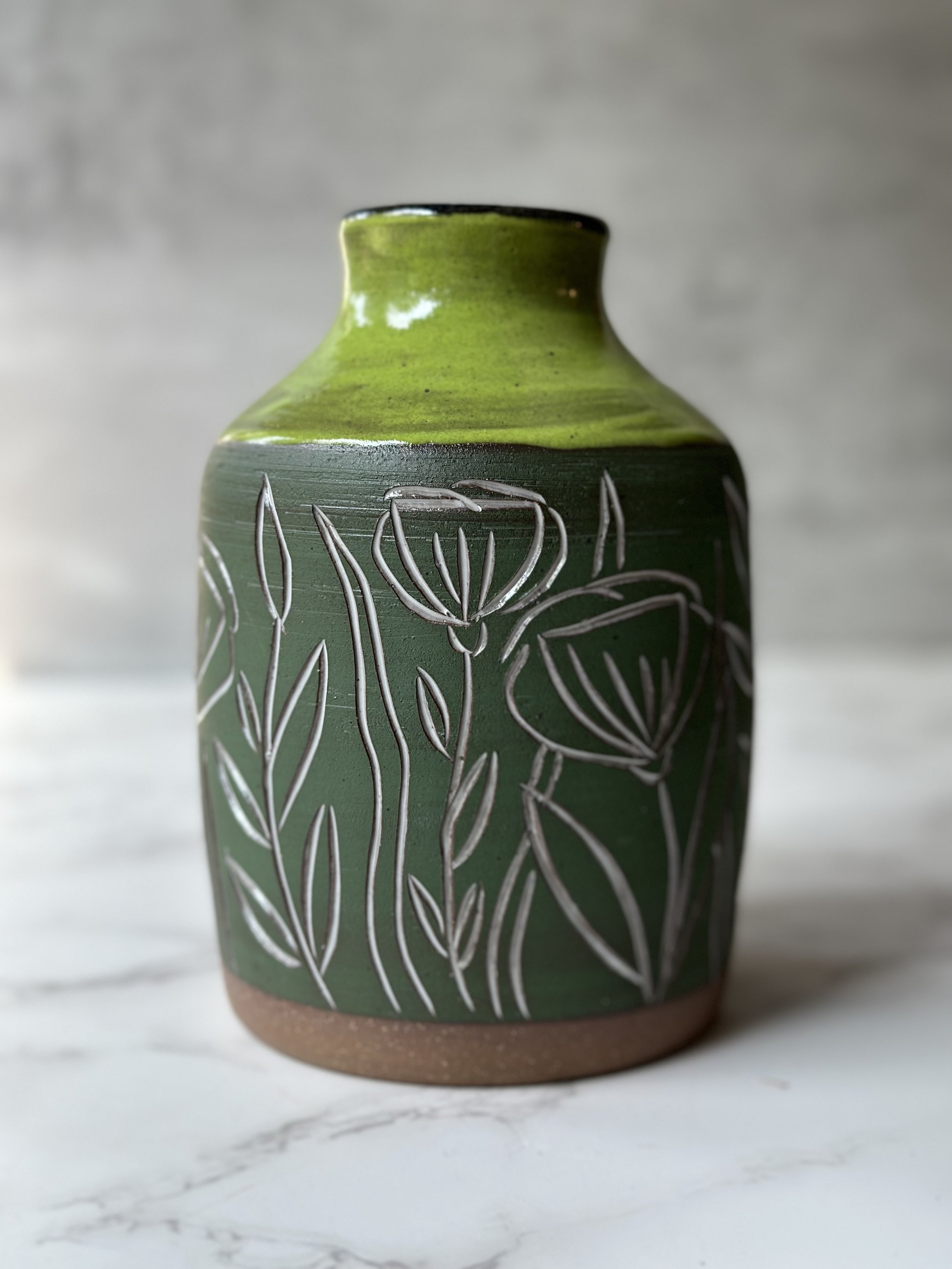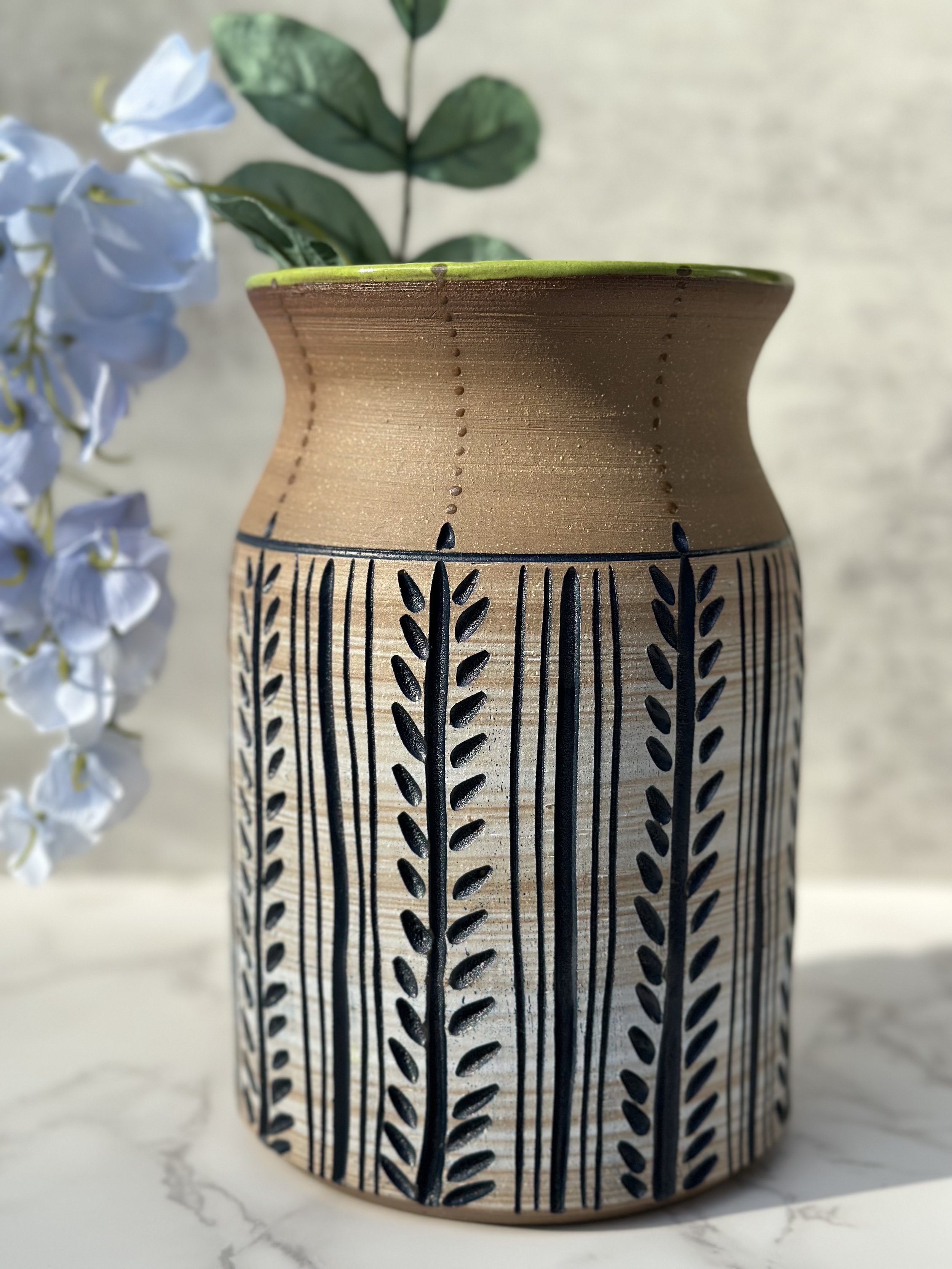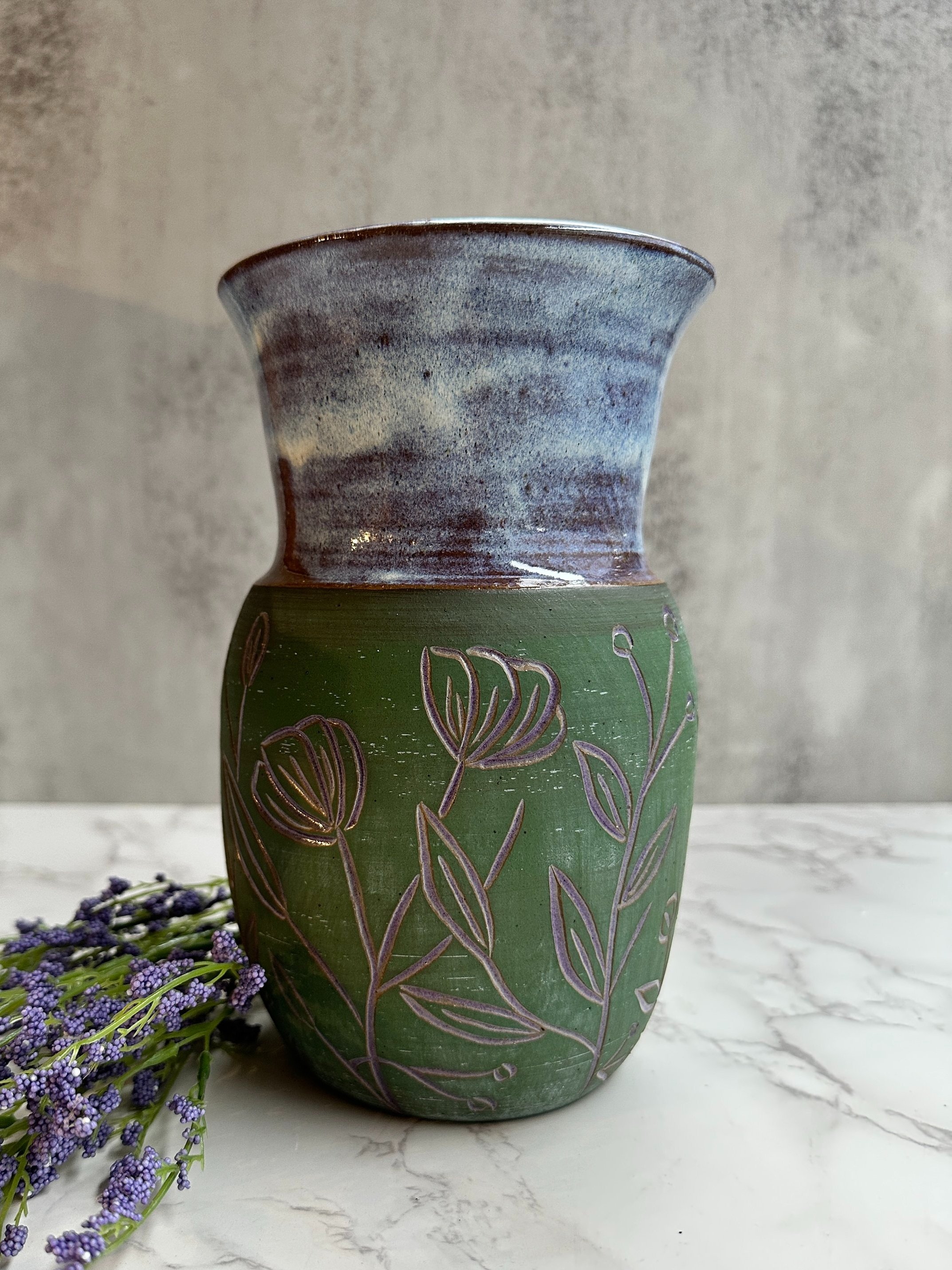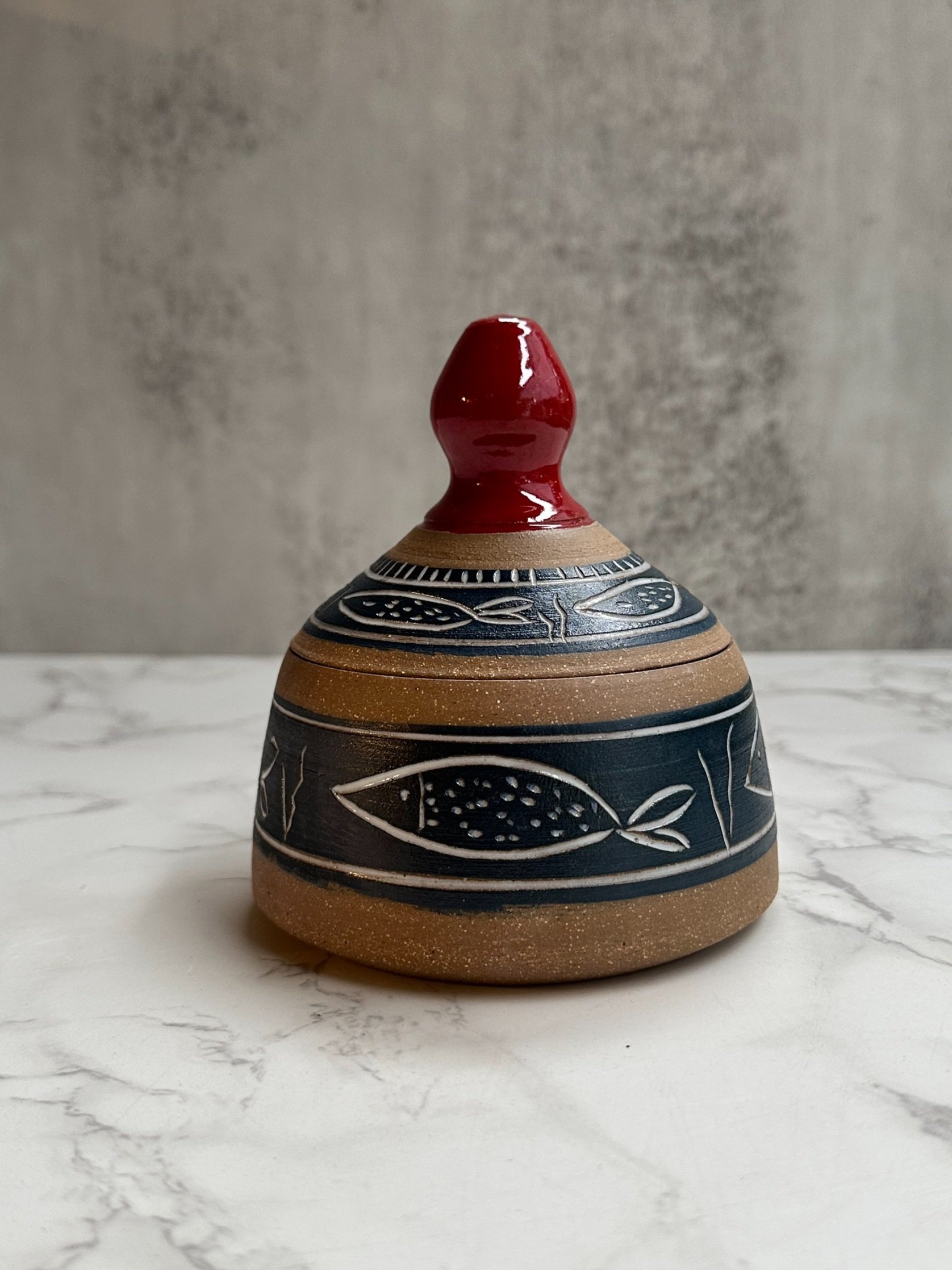3 Creative Benefits of Carving Pottery for Every Ceramic Artist
The last reason is why I can’t stop.
Ceramic carving is a timeless technique that adds intricate designs, depth, and personality to pottery. Whether you're a seasoned potter or just starting, carving can elevate your craft and connect you with a long tradition of handmade art-making.
1. Carving Pottery Leaves a Unique Imprint
Every piece I throw on the wheel is handmade, so naturally, each piece has an element of uniqueness. But a cylinder is a cylinder is a cylinder, and I want my art to be recognizably mine through sight and touch.
Texture is what makes a pottery piece memorable. By carving with my trusty set of quality carving tools, I can add unique details that turn a simple vessel into a work of art that stands apart. No two carvings are the same. Ever. I can’t duplicate an identical carve even if I tried — my body just won’t let me.
And the imprints I want to leave in my work? Blossoms. Joy. Curves. Blooms. Nature. Check out my gallery!
2. Carving Pottery Adds Texture & Depth
I like to make pieces with visual and tactile texture.
Carving allows me to give a piece valleys and depth, which I then often accentuate by glazing the inside of each crevice and leaving the surrounding surface bare.
My carvings are meant to be touched & traced — with one’s eyes and/or hands.
3. Carving Pottery is a Practice in Mindfulness
Many of my students comment on how meditative pottery can be. I totally agree! And personally, I find carving to be the most meditative and healing.
Why? Because I only get one chance to carve. There are no erasers.
I carve in a focused flow state (see this video as an example!) — and whatever happens, happens. Sounds stressful, maybe, but I find the concentration meditative. And if I do fail a carve, even if it took me an hour, I just exhale and simply recycle the clay — it likely wanted to be something else anyway. I’ll carve again tomorrow.
Whether you're carving for creative expression, texture, or mindfulness, this technique (while it takes a whole lot of practice!!) can transform your work — trust me.


